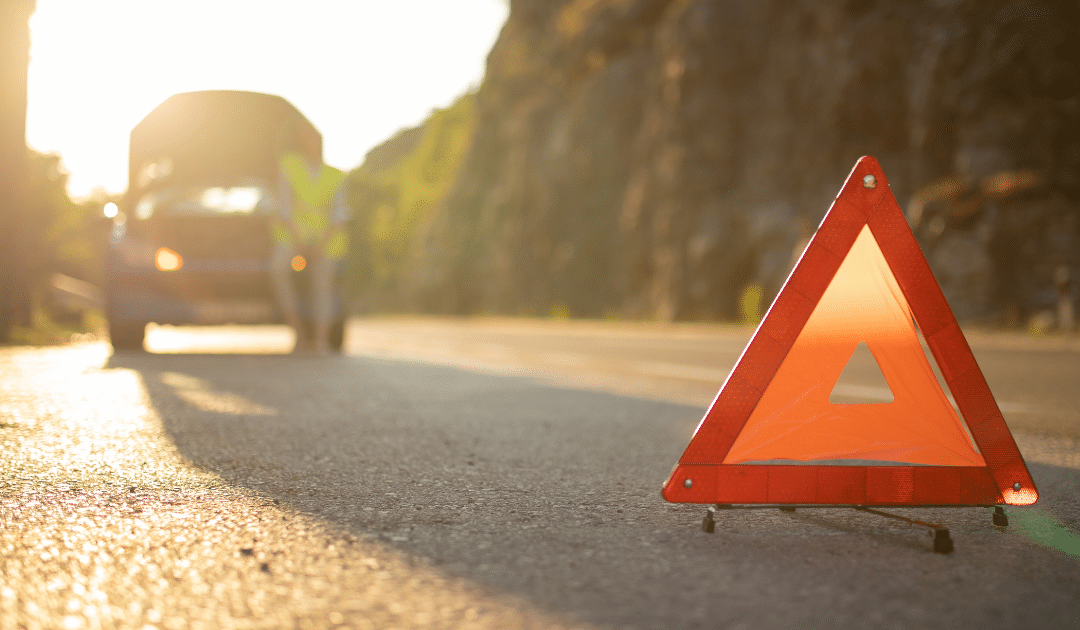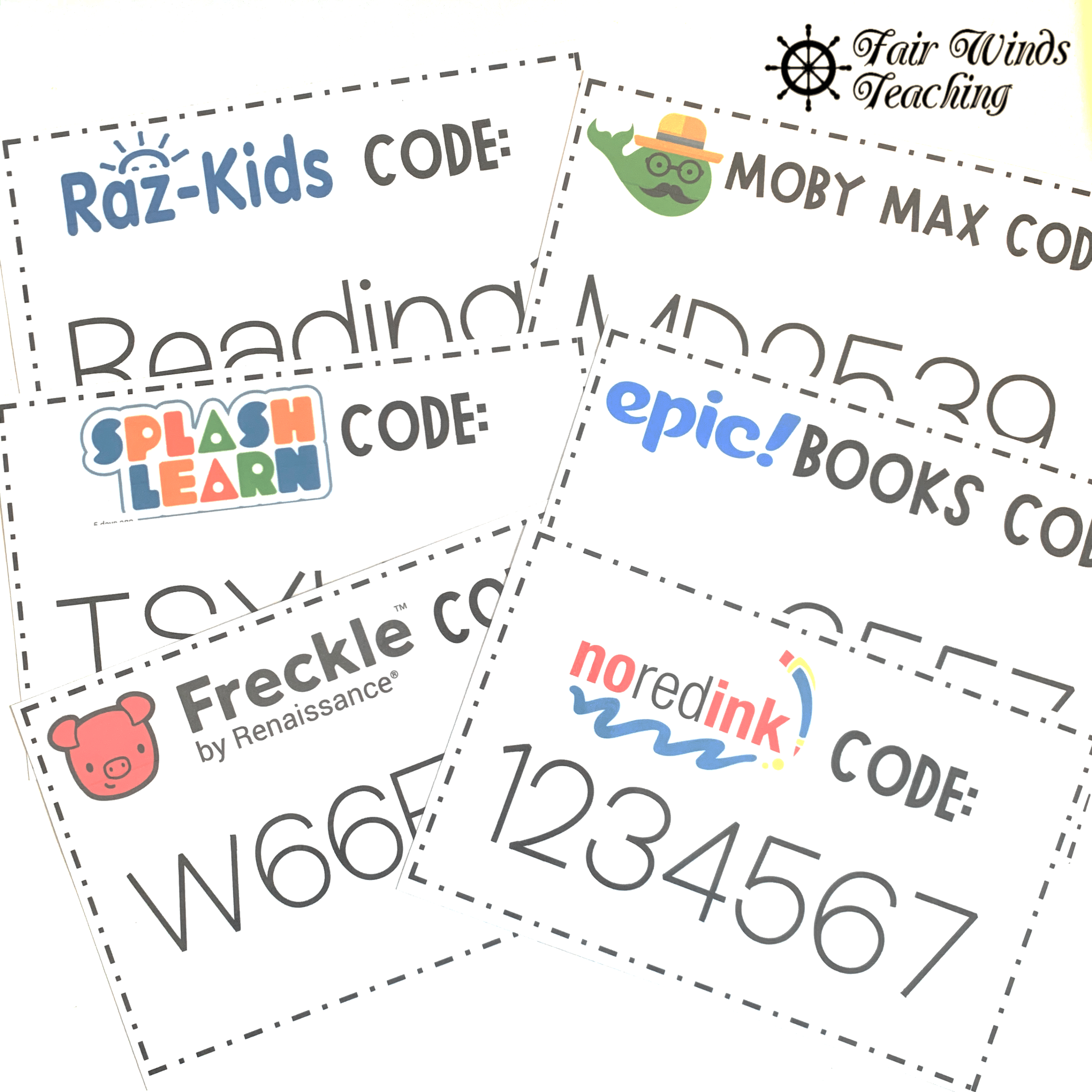
by California Casualty | Homeowners Insurance Info |
Summer is the perfect time for outdoor adventures. Whether you like hiking, biking, swimming or camping, there are plenty of activities to enjoy and places to explore.
While we have fun, it’s also important to remember that sometimes our outdoor excursions come with unexpected risks. From weather to wildlife encounters, make sure you and your family take the right precautions to stay safe. Follow these tips as you enjoy the great outdoors this summer.
Tips for Water Safety
In the U.S., 11 people die from drowning each day, according to the CDC. Children ages 1-4 are at the greatest risk, but drowning is also the second leading cause of accidental death among children ages 1-14.
These tragedies can be easily prevented with simple pool safety and water safety measures.
-
- Never swim alone. If possible, swim in the presence of a lifeguard.
- Teach children to swim. Even toddlers can learn water survival skills, according to the American Academy of Pediatrics. But remember that swim lessons do not guarantee your child can protect himself/herself from drowning.
- Designate a water watcher whenever your child is in the water. Avoid distractions, such as from phones. Drowning can happen in an instant.
- Don’t let children play around pool drains or suction fittings.
- Learn CPR in case you need it.
- Wear lifejackets if on a boat.
- Remember that swimming in a pool is different from swimming in a lake or in the ocean. There are currents and undertows.
- Don’t drink alcohol while swimming.
- Pool Safely is a national public education campaign. Take the Pool Safely Pledge and get a free downloadable safety kit.
Tips for Hiking Safety
Whether it’s a national park or a local trail, hiking is a popular way to connect with nature. Making the right preparations will help ensure that you can enjoy the scenery without worrying about injury.
-
- Know exactly where you are going. Consult with experts who have been there on what you need.
- Check the weather forecast and then recheck it. Bring any additional supplies you will need in case the weather turns.
- Do not hike alone. Travel with someone else, and if you’re going to a remote area, try to travel with a small group
- Know the nearest ranger station and the number in case you need help.
- Do not go into an area marked closed.
- Leave a copy of your itinerary with a trusted friend or family member. Include details such as your destination, the timeframe of arrival and departure, phone numbers of people you are with, specific trails and campgrounds, and even the car you will be driving. This will help in case you are lost.
- Pack the essentials. These include a first aid kit, compass, flashlight, matches, knife, food, water, toilet paper, duct tape, trash bag, whistle, bug spray, sunscreen, and a solar charging power source.
- Stay hydrated and know the signs of heat exhaustion. Infants and young children, as well as people over age 65, are at the greatest risk.
- If taking your dog on a hike, make sure he/she is protected against fleas and ticks. Bring water for your dog and take care that he/she does not get overheated.
Tips for Camping Safety
Being close to nature means that many of the hiking safety tips, above, will apply. In addition, you’ll want to take these added precautions.
-
- Arrive early so you can make camp before dark. Give yourself two hours of daylight to set up camp. Learn your campsite in the daylight so you have an idea of where things are before dark.
- Don’t pitch your tent near the tallest trees in case of a lightning storm.
- Build campfires in a safe area, away from trees, bushes, and other flammable objects. Beware of post-fire embers.
- Do not leave food or garbage in the open.
- Never approach or feed wildlife.
- Know that If animals feel cornered, they could bite, scratch or attack. Wild animals may transmit rabies.
- Practice good hygiene. Wash hands before handling food.
Tips for Bicycle Safety
Biking is great exercise and another fun family activity. Hit the road safely with these tips.
-
- Many states require bicycle helmets for children under 18. But helmets are good protection for everyone.
- Dress in bright colors so you will be seen.
- Wear sunglasses to protect your eyes and sunscreen to protect your body.
- Never ride with headphones or earpieces. You want to be able to hear what’s going on around you.
- Choose routes that have wide roads or bike lanes. Observe all traffic laws and be aware of drivers.
- Bring a patch kit in case you need to repair a tire or tube.
- Stay hydrated. Bring water with you.
- Carry some emergency cash in case you need it.
Whether you are traveling by car, plane, or RV always remember to travel safe and plan ahead of your adventure.
This article is furnished by California Casualty, providing auto and home insurance to educators, law enforcement officers, firefighters, and nurses. Get a quote at 1.866.704.8614 or www.calcas.com.

by California Casualty | Auto Insurance Info |
It’s hot… but you’re not the only thing feeling the heat. Rising temperatures are not only dangerous for us; they can also wreak havoc on our vehicles.
As the summer heat bears down in the midst of vacation and road trip season, here’s what you can do to help better protect your car on and off of the road.
How to Prevent…
Tire Damage
Your tires expand and contract in extreme temperatures. That’s why you find yourself losing more air in the winter and/or having overinflated tires in the summer. In general, you will lose or gain 1 PSI (pound per square inch) for every 10-degree temperature change. This means in the summer you could easily gain over 2 PSI. Not keeping your tires at the right pressure can reduce maneuverability and cause a blowout resulting in an accident.
To avoid tire damage in the summer, check them every few weeks to make sure you have the correct amount of pressure. Proper summer tire inflation will decrease your chances of having an accident, give you a smoother ride, and improve your gas mileage.
It’s better to be safe than sorry- if you are driving to a vacation destination, even if you just checked your tire pressure, be sure to have a spare on you just in case.
Engine Overheating
While an engine can overheat any time of the year, the summer heat will increase your chances. The high temperature itself, the heat coming off of the asphalt, and the ambient temperature surrounding the engine all play a factor in your engine becoming too hot. Of course, there are other factors that could also cause your engine to overheat including leaks, coolant problems, radiator issues, or even a damaged water pump.
So, how do you keep your engine from overheating? Routine maintenance is key for a healthy engine that can withstand the summer heat. Get regularly scheduled oil changes, frequently check your coolant levels, and replace old belts and hoses.
Unfortunately, sometimes overheating is unavoidable- especially if you have an older engine. And if an overheated engine is not handled properly, it can start a fire or ruin your vehicle. If your vehicle starts to overheat, turn off the A/C and crank up your heat. We know this sounds bizarre in the summer, but it will pull heat away from your engine and give you time to pull over to a safe location. Next, shut off your car for about 15 minutes. Keep an eye on your temperature gauge and make sure it starts to drop. If you haven’t already, this is where you will need to check and add your coolant, if needed. Finally, after giving it a few minutes rest, restart your engine and take it to your local mechanic.
Weakened Battery
Summer temps can also suck the life out of your battery. The heat leads to the evaporation of vital liquids resulting in a weakened charge. This can lead to corrosion which will damage the internal structure of your battery.
A heat-damaged battery won’t last long, especially once winter rolls around. To keep your battery in good working condition during the summer and prevent any weakening, park in the shade, keep your battery clean, limit short trips, avoid using electronics when the engine is off, and make sure your batteries’ heat barrier is still in place.
Watch for signs of your battery failing. If your battery light is on or your engine is slow to start it may be time for a replacement.
Fluid Leaks
The sun can evaporate important fluids in your vehicle, like coolant and brake fluid. Summer heat can also blow a head gasket or cause your gas to vaporize. When gas turns to vapor it increases the pressure in your gas tank and could potentially crack your hose systems. A cracked hose can lower your fuel efficiency, and if a hose were to break it could destroy your engine.
Keep your car in the shade, consistently check fuel levels, replace old hoses and belts, and continue with routine maintenance to decrease your odds of a leak. If you see a puddle, stain, or other types of liquid under your car after it has been sitting, it’s often a sign that you have a fluid leak and your car requires attention.
Other Interior & Exterior Damage
The heat won’t only affect your vehicle under the hood. It can cause fading, cracking, and other damage to your dashboard, seat, and exterior paint. And any one of these could be a costly repair.
Save yourself the money and stress and keep the sun from damaging your vehicle by keeping up with routine maintenance and cleaning, and also avoiding leaving your car in the sun whenever possible.
To protect your interior always
-
- Park in the shade when you can or use a sun-shield to protect your dash
- Cover your seats and steering wheel with covers to prevent fading and cracking
- Use detailing products to eliminate dust particles that could cause scratches
For the exterior remember to
-
- Keep your car in the garage or covered when you can
- Wash and dry your car often to get rid of debris that could fade your paint
- Wax your vehicle to give added protection against harmful rays
Stay safe in the heat and keep your vehicle safe too this season. Extend your vehicle’s life for the many summers ahead by following our tips and taking the proper precautions.
For more hot car, myths click here.
This article is furnished by California Casualty, providing auto and home insurance to educators, law enforcement officers, firefighters, and nurses. Get a quote at 1.866.704.8614 or www.calcas.com.
by California Casualty | Educators |
Written by Casey Keyser, MSEA Third Grade Teacher
 I don’t need to tell anyone in the school system how difficult the last year and a half was for education. Not just for teachers, but for bus drivers, principals, parents, students, and everyone in between.
I don’t need to tell anyone in the school system how difficult the last year and a half was for education. Not just for teachers, but for bus drivers, principals, parents, students, and everyone in between.
Teaching during a pandemic was by far the most difficult thing I have encountered in my career. It is hard to believe that anything good could come out of a year of lockdowns and virtual learning, let alone find the silver lining… But I am here to tell you… with every storm comes a rainbow.
It’s time to find that rainbow and help ourselves and our students with this upcoming school year. We must move forward and celebrate the skills we acquired throughout the storm.
Take a second to reflect… not on the bad but on something you learned this school year. Was it how to mute and unmute? My students taught me a fancy trick using the space bar!
Did you learn to use an online assessment tool like Kahoot! Or Quizizz? Did you connect with parents at a moment’s notice online using Zoom or Google Meet? Who knew we would be video conferencing with our students and families!
Were you finally able to start using a digital planner instead of your paper one? This has been my favorite new transition, I will never go back.
All of these things and SO MUCH more are the wins of having to teach virtual or hybrid this past year. You were encouraged to be an early adopter of tech tools and new devices like no other time before. But you dove right in to learn new skills and now you have experience with things like recording a screencast to give students directions or creating a complete interactive classroom with Google Slides and your Bitmoji.
If you’re on Facebook and you haven’t joined this teacher group yet… it is the rabbit hole of all rabbit holes. You will have access to FREE teacher resources that will help build engagement in your classroom using your Bitmoji. Join here now!

It’s time to celebrate YOU for all you have learned. I am proud of you for getting out of your comfort zone and I promise you, you are a better educator for it.
So now what… you know all of these new and exciting skills, what do you do with them? Are you excited to get back into the classroom and go back to normal? This is an overwhelming, “NO!” This is your time to shine and take this great opportunity to start reimaging what schools can look like. Be that trailblazer that reflects on the things that got easier because of your new skills. Challenge yourself and your colleagues to think outside the box. Make this year the best year yet!
As you start to set up your new classroom think of ways you can incorporate those virtual learning skills into the new school year. You might not be virtual or hybrid anymore but you can still create digital libraries, have students record Flipgrid videos, go on virtual field trips around the world and so much more.
I know the one thing I will never go back on is parent/teacher conferences. I was able to meet with each and EVERY one of my parents (multiple times) over Google Meet during this past school year. I have never felt more connected with them and we both had the flexibility to do it from wherever was best.
What is one thing you would continue to implement this school year?
Before the pandemic, I had a difficult time teaching the students simple tech skills and they were in front of me in the classroom. They had trouble logging into their computer, remembering their passwords, and finding certain button icons on the screen to help troubleshoot any situation. During virtual learning, this became even harder. The students were not in front of me anymore to help them over their shoulder. I had to get creative with creating multiple tech tool button cards. The cards are a good visual of what each button is and what they are used for. I was able to hold them up to the screen so the students could see where to go. I will continue to use these when we get back into the classroom to make learning tech tools easier. I have created buttons for basic Internet browsers, Canvas, Google Meet, Zoom, Pear Deck, and Schoology. They truly are a game-changer, I couldn’t imagine going back to before I had them.

The second resource that I can’t live without is my tech tool username and password display cards. Simply print these out and add your class code or password. I add them to a ring and hang them at the front of the classroom for all students to be able to access. It is a great way to never forget your codes and to build agency with your students.

All these things and more are like letting the genie out of the bottle, I don’t think he’ll ever go back in. All we can do is learn from the skills we acquired and make the education system even better than before.
As we look forward to this upcoming school year, please try to remember the good that came from this very difficult year. There are so many bright colors in the rainbow and you just have to find them!

Casey Keyser is a third-grade teacher at Butterfly Ridge Elementary in Frederick County, Maryland. She was recently recognized as the national winner of the NEA Foundation’s 2021 Teaching in Excellence Award. Casey is the proud owner of the Education Resource Blog, Fair Winds Teaching, and loves to connect with her education community through her TeacherPayTeacher’s business.

by California Casualty | Educators |
Teachers do not have summers off. Professional development (PD) is one of the many tasks that’s expected of educators in the summer. But if your district doesn’t provide or pay for PD resources, the costs can quickly add up.
If you’re looking for ways you can easily meet your professional development goals without spending a ton or leaving your home, you’ve come to the right place.
Enjoy some free PD this summer when it’s convenient for you (like while you’re sitting by the pool, enjoying the sun, and pretending like the school supply aisles aren’t already back in stores…) with these free online resources.
- Coursera – Coursera is an online learning resource hub that collaborates with 200+ universities and companies all over the world. You can find professional development resources, classes, and even earn certificates and degrees when you join for free. Click here to explore their vast amount of Teaching PD resources.
- Library of Congress – The Library of Congress offers build-your-own PD models for teachers, along with webinars and workshops, videos, and activities. Click here to get started.
- Learners Edge – Learners Edge offers a wide variety of free webinars on mental health, reading, writing, culture, motivation, and more that you can earn certificates for. Browse their library by clicking here.
- edWeb.net – edWeb hosts edWebinars weekdays all throughout the summer that you can earn certificates for. Through edWeb you can connect with peers and share ideas by joining ecommunities. You can even create your own webinars and learn from each other. Click here to view the free webinar schedule and check out everything else they have to offer.
- Teachers First – Teachers First offers free, quality, hands-on workshops for teachers and other educators. Their webinars are interactive, reached-based, and packed with great ideas for your classroom. Click here to get started.
Before you begin, be sure to check with your school take to make sure these PD options meet your school district’s requirements.
Need some last-minute (mostly) PD books? Check out our Summer Reading List for Teachers.
Have a great rest of summer!
This article is furnished by California Casualty, providing auto and home insurance to educators, law enforcement officers, firefighters, and nurses. Get a quote at 1.866.704.8614 or www.calcas.com.

by California Casualty | Homeowners Insurance Info |
Planning to fire up the grill or gather around the fire pit this summer? While these fun activities are great ways to spend the season with your family and friends, they also come with a risk of fire-related injuries.
If you’re hosting an outdoor gathering or handling potentially hazardous materials like fireworks, it’s important that you take the proper fire safety precautions. Here’s what you need to know to stay safe and prevent an injury or accident this summer.
1. Fire Pits
There’s nothing better than taking advantage of your fire pit on a cooler summer evening. But if you haven’t set up for safety, there could be dangerous consequences.
-
- Position your fire pit so it is at least 10 feet away from your house and anything that can catch fire. This includes trees and bushes.
- Avoid burning treated wood, wet wood, or anything that gives off a gas or dense smoke.
- Don’t use flammable fluids to start or relight a fire. They can cause an explosion or turn a controlled fire into an uncontrollable one.
- Consider a fire screen to catch stray sparks.
- Have a fire extinguisher on hand and/or a bucket of water.
2. Barbecue Grills
Barbecues are the centerpiece of our summer celebrations. But cooking outdoors comes with its own share of hazards. Propane is used to power some grills. It is a highly flammable substance that can burn if it comes in contact with your skin. Charcoal briquettes also can cause burns and fires if not properly attended. Follow these tips for grilling safely.
For propane grills:
-
- Be careful not to overfill a propane tank.
- Check the connection between the propane tank and the fuel line to make sure there are no leaks. You can do this by making a solution of 50% liquid dish soap and 50% water, and brushing it on the hose connections. If there are leaks, you will see air bubbles when you turn on the propane.
- Store your tank in a safe location, upright and away from a heat source. Do not store a propane tank inside your house.
For charcoal grills:
-
- Use plenty of water to douse hot coals after you’re done cooking. Give them a stir to make sure there are no lit embers.
- Do not put the coal and embers in plastic, paper, or wooden containers after use. They could still be hot enough to start a fire.
3. Campfires
Sitting around the campfire and roasting marshmallows is a highlight of camping. But did you know that campfires can get as hot as 932 degrees Fahrenheit in just 3 hours? Their embers stay hot long after the fire is done—hot enough to burn someone who comes in contact with them eight hours later!
-
- Choose a location for your campfire that is away from dry grass and trees and from your tent.
- Add rocks around the perimeter of your campfire to help contain it.
- Enforce a 3-foot perimeter around fires that is the kid-free zone and pet-free zone.
- Never use gasoline to start a campfire or add it to an open flame.
- Put out your campfire before going to bed. Drench it with water and bury it with sand. That will help prevent the fire from starting again from the embers.
4. Fireworks
Fireworks are fun, festive, and a much-loved part of our patriotic celebrations. Yet fireworks send thousands of Americans to the ER every July. While you can enjoy the public fireworks without too much worry, doing them on your own requires a few additional safety precautions.
-
- Buy fireworks from a reputable seller.
- Store them safely away from children and pets in a locked box in a cool, dry place.
- Carefully read and understand all instructions.
- Avoid alcohol while using fireworks. Not only could it impair you, alcohol is highly flammable.
- Keep onlookers 60 feet away from the place where you’re setting off fireworks.
- Light one at a time. Light the fuse at the tip, not the bottom.
- A barbecue lighter works well to help keep fireworks at arm’s length.
- If a firework does not light, do not attempt to relight it. Wait at least 30 minutes to retrieve any fireworks that did not ignite.
- Never allow children to handle fireworks. Children ages 8 and older may hold sparklers with proper supervision. Sparklers could easily catch a child’s clothing on fire or cause blindness if in contact with a child’s eyes.
5. Lawnmowers
You may not think it, but your lawnmower is a fire risk. Any lawnmower, electric or gas, can catch fire and ignite items around them including your home. Fires may be caused by leaking fuel or fumes from a gas mower. Electric mowers may short circuit, causing a fire. In addition, a hot mower can ignite dry grass that is packed into it.
-
- Start mowing at your house and head away from it. This will reduce the chance that a hot mower is near your home.
- Never add fuel to a hot motor. Wait until it cools down.
- Avoid moving in hot, dry, windy weather, or if you do, wet down the grass first.
- Use a hose to clean out grass from mower blades.
- Make sure the area you’re mowing is clear of rocks. Even tiny rocks can cause a spark when it strikes the mower’s blades at high speed.
- Follow your mower’s recommended maintenance plan to ensure everything is in good working order.
6. Recreational Vehicles
Traveling in an RV is a dream. Having a fire in an RV is a nightmare. Powered by propane, a hazardous substance, and electric generators, which produce exhaust gases, RVs can be a fire risk.
-
- Make sure you have installed a smoke detector, carbon monoxide detector, and a propane leak alarm.
- Check the RV’s mechanical and electrical systems to ensure they’re in good working order.
- Look for frayed electric cords on any appliances in the RV.
- When cooking, never leave the stove unattended.
- Store clothes and flammable objects away from the cooking area.
- Store the propane tank outside, but not in the back or you could be at risk in the event of a rear-end collision.
- Let the generator cool down before refueling.
- Add RV coverage to your insurance policy.
7. HVAC (Heating, Ventilation, and Air Conditioning) Systems
During the summer, we run our air conditioning for long periods of time. Hot temperatures can strain air conditioning units. If your system is dirty, it could short circuit, causing a fire to start.
-
- Have your HVAC system cleaned at least once a year.
- Replace vents and exhaust fans as needed.
- Check your smoke detectors to make sure that they are in working order so they may warn you of a fire.
This article is furnished by California Casualty, providing auto and home insurance to educators, law enforcement officers, firefighters, and nurses. Get a quote at 1.866.704.8614 or www.calcas.com.



 I don’t need to tell anyone in the school system how difficult the last year and a half was for education. Not just for teachers, but for bus drivers, principals, parents, students, and everyone in between.
I don’t need to tell anyone in the school system how difficult the last year and a half was for education. Not just for teachers, but for bus drivers, principals, parents, students, and everyone in between.




